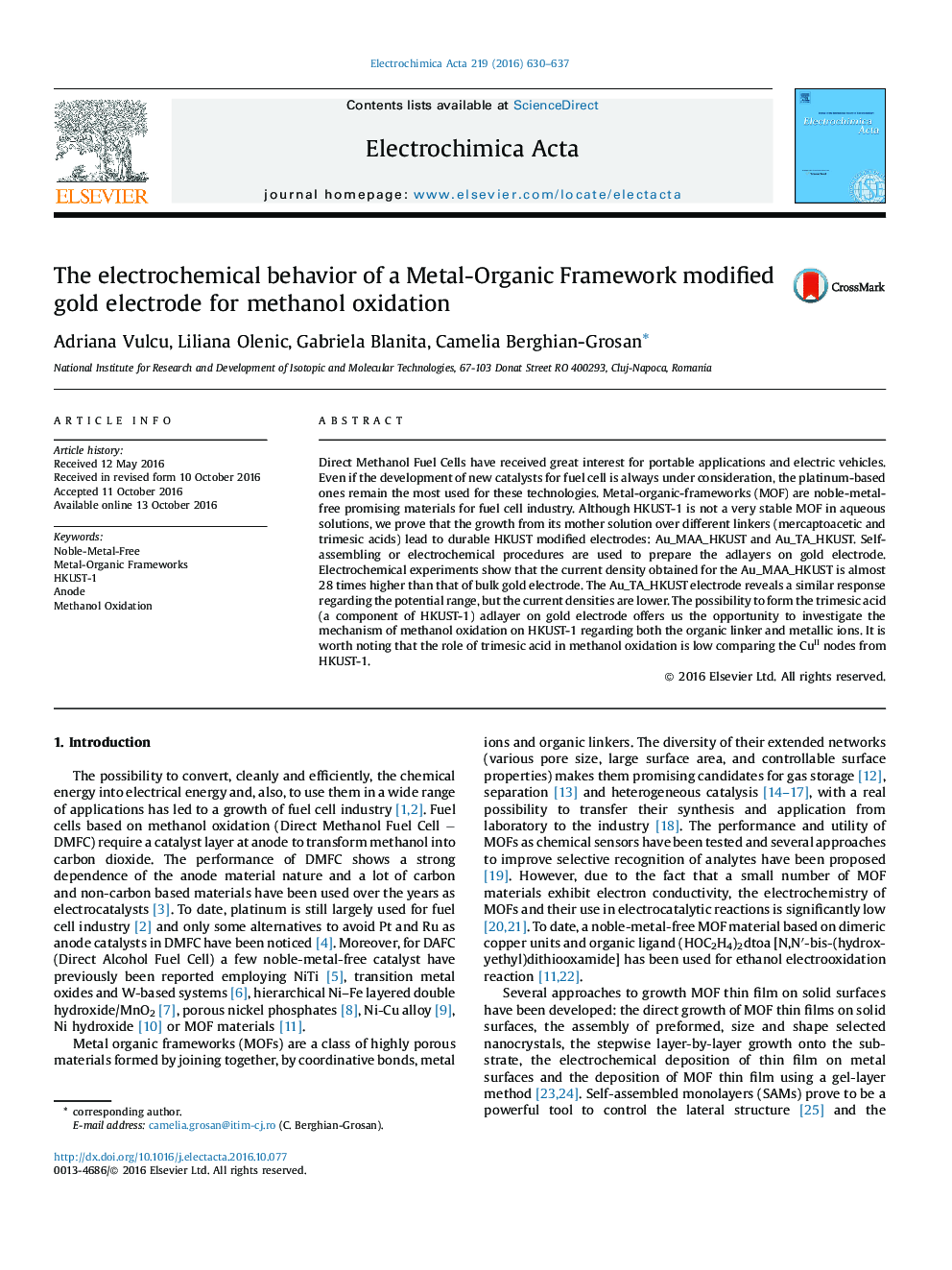| کد مقاله | کد نشریه | سال انتشار | مقاله انگلیسی | نسخه تمام متن |
|---|---|---|---|---|
| 6473026 | 1424138 | 2016 | 8 صفحه PDF | دانلود رایگان |
Direct Methanol Fuel Cells have received great interest for portable applications and electric vehicles. Even if the development of new catalysts for fuel cell is always under consideration, the platinum-based ones remain the most used for these technologies. Metal-organic-frameworks (MOF) are noble-metal-free promising materials for fuel cell industry. Although HKUST-1 is not a very stable MOF in aqueous solutions, we prove that the growth from its mother solution over different linkers (mercaptoacetic and trimesic acids) lead to durable HKUST modified electrodes: Au_MAA_HKUST and Au_TA_HKUST. Self-assembling or electrochemical procedures are used to prepare the adlayers on gold electrode. Electrochemical experiments show that the current density obtained for the Au_MAA_HKUST is almost 28 times higher than that of bulk gold electrode. The Au_TA_HKUST electrode reveals a similar response regarding the potential range, but the current densities are lower. The possibility to form the trimesic acid (a component of HKUST-1) adlayer on gold electrode offers us the opportunity to investigate the mechanism of methanol oxidation on HKUST-1 regarding both the organic linker and metallic ions. It is worth noting that the role of trimesic acid in methanol oxidation is low comparing the CuII nodes from HKUST-1.
Journal: Electrochimica Acta - Volume 219, 20 November 2016, Pages 630-637
